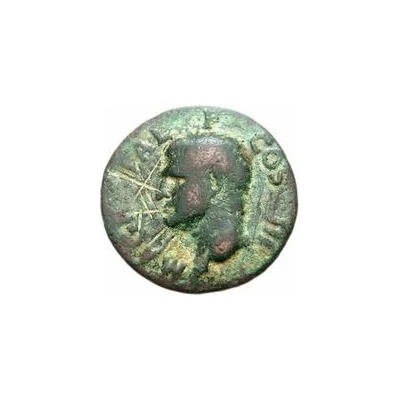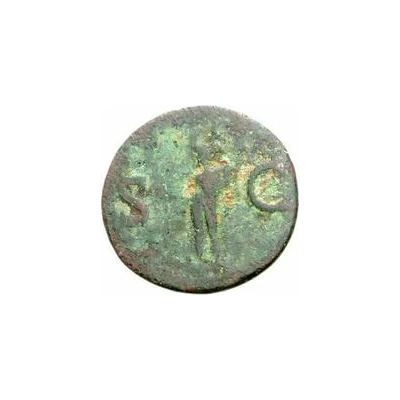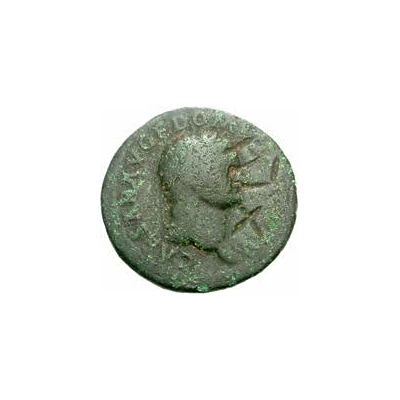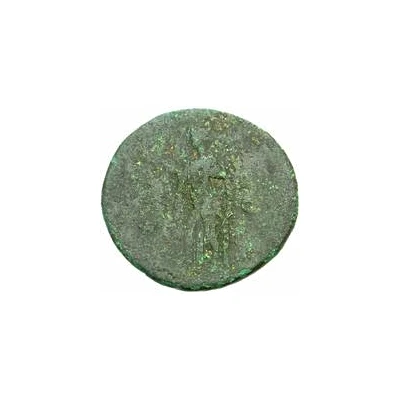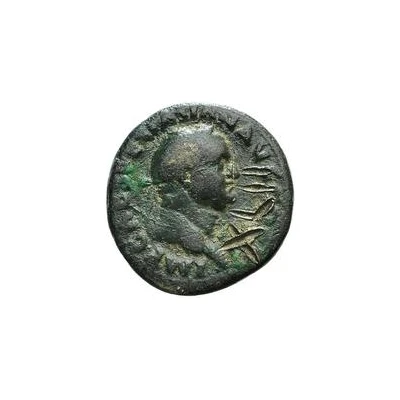
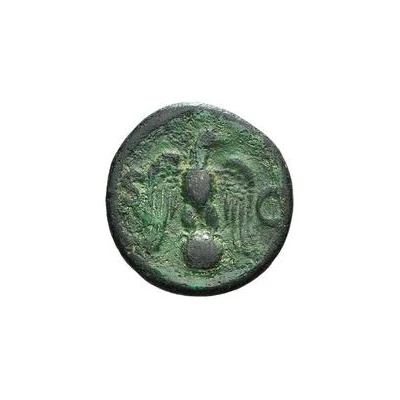

© Bertolami Fine Arts
42 Nummi Countermark; As of Vespasian,
| Bronze | 9.94 g | 28 mm |
| Issuer | Ostrogothic Kingdom |
|---|---|
| Type | Standard circulation coin |
| Years | 501-553 |
| Value | 42 Nummi = 1⁄12 Siliqua = 1⁄96 Tremissis |
| Currency | Tremissis (490-553) |
| Composition | Bronze |
| Weight | 9.94 g |
| Diameter | 28 mm |
| Shape | Round (irregular) |
| Technique | Hammered, Countermarked |
| Demonetized | Yes |
| Updated | 2024-10-10 |
| Numista | N#166630 |
|---|---|
| Rarity index | 97% |
Reverse
Eagle on globe with letter on either side.
Script: Latin
Lettering: S - C
Translation:
Senatus Consulto
By Decree of the Senate
Edge
Plain
Comment
These countermarked coins came in two denominations: 42 Nummi and 83 Nummi. While their values are quite odd in comparison to other Ostrogothic coins, these coins were not intended to be used as general nummus pieces, but rather fractions of the Siliqua (1/12 and 1/6 of one, respectively). While these denominations in nummi are not perfectly divisible by the equivalent values in siliquae, these values are as close to the proper divisions as possible.The host coin for this piece is a Rome mint, 1 As struck under Vespasianus (69-79), and these were said to be countermarked in the early- to mid-6th century. With the Ostrogothic Kingdom falling in 553, that is the latest possible end-date.
Around 150 countermarked coins are known, with the vast majority being found in Italy. Because the host coins were minted hundreds of years before the countermarks were applied, it is suggested that a hoard of these host coins were found, which prompted some local mint in Ostrogothic Italy to start countermarking them.
Interesting fact
One interesting fact about this coin is that it was issued during the reign of Vespasian, who was the Roman Emperor from 69 to 79 AD. This coin was part of a series of coins that were issued to commemorate the Roman Empire's victory over the Jewish Revolt. The countermark on the coin, which features the image of a Gothic warrior, was added later by the Ostrogothic Kingdom, which ruled over much of Italy and the Balkans during the 5th and 6th centuries AD. Despite being made of bronze, this coin is relatively rare and highly sought after by collectors due to its historical significance and the fact that it has survived for over 1,500 years.
